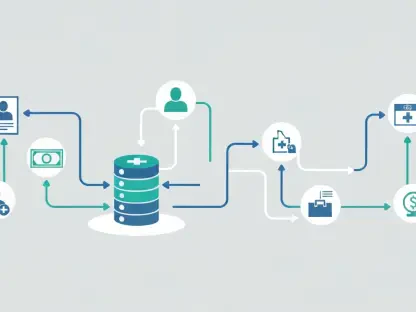In today’s digital age, where video is ubiquitous across online platforms, managing video content efficiently can pose significant challenges for developers and businesses alike. Whether in social media, e-commerce platforms, or virtual events, video content must be optimized for seamless viewing experiences. This need has brought about innovative solutions, such as Video as a Service (VaaS) and Cloudinary API, which revolutionize the way media content is managed and delivered. These cloud-based technologies provide robust tools to offload complex video processes and enable developers to focus on enhancing user engagement without the hassle of managing extensive video infrastructure. As the digital marketplace continues to expand, understanding the efficiencies offered by VaaS and Cloudinary API becomes vital for businesses aiming to create captivating media experiences.
1. Video as a Service: Simplifying Media Management
Video as a Service (VaaS) has emerged as a transformative cloud-based solution designed to streamline video operations by offering comprehensive video functionalities via APIs and SDKs. This model eliminates the need for costly in-house infrastructure by providing services like uploading, encoding, and streaming directly through high-speed content delivery networks (CDNs). For developers, integrating video becomes as simple as using a URL or a dedicated video player within applications or websites. By removing the need for server management, encoding setups, and compatibility checks, VaaS significantly reduces operational burdens and accelerates time-to-market.
One of the most significant advantages of VaaS is its scalability, ensuring that as a company’s audience grows, its video delivery capabilities expand correspondingly. This scalability is paired with an economical structure, where users only pay for what they consume, thus avoiding hefty initial investments. Additionally, VaaS supports faster market entry, as video features can be added with minimal coding effort. Built-in security measures, such as encryption and digital rights management (DRM), safeguard content, while extensive analytics offer insights into viewer behavior, buffering issues, and performance metrics. The accessibility features, including captioning and support for audio descriptions, make these solutions compliant with accessibility standards, broadening their appeal.
2. Cloudinary API: A Comprehensive Approach to Media Optimization
The Cloudinary API represents a powerful toolset for developers seeking to integrate both video and image management within their applications. It provides a cohesive, API-first environment that enhances video content through several advanced capabilities aimed at optimizing quality and delivery. Core functionalities include an Upload API for robust media handling, an Admin API for asset management, and specialized APIs for programmatic media transformations and video streaming. This comprehensive range of features empowers developers to control media lifecycles efficiently, from uploading to transforming and delivering videos.
Cloudinary’s video capabilities are particularly noteworthy for their focus on enhancing playback quality irrespective of device or connection type. Adaptive bitrate streaming ensures smooth experiences by adjusting quality dynamically, while transformation capabilities allow for customizable video formats through simple URL parameters or SDK usage. Automatic format conversion and transcoding optimize videos for both quality and file size, achieving professional-grade results with minimal effort. These features contribute to seamless integration and reduce technical overhead, positioning Cloudinary as a go-to option for businesses prioritizing media optimization.
3. Practical Applications and Industry Impact
The versatility of VaaS and the Cloudinary API is evident in their wide-ranging applications across various industries, with e-commerce, education, and user-generated content platforms leading the charge. In e-commerce, for example, product videos can be automatically converted and seamlessly embedded into web pages, boosting product engagement and aiding purchase decisions. Live webinars benefit from managed streaming services, enabling registered users to have a smooth viewing experience. Education platforms leverage integrated analytics to provide insights into student engagement, helping educators refine content delivery.
For user-generated content, these solutions provide simplified upload processes, automatic content tagging, and efficient moderation through the Admin API, creating a streamlined experience both for users and platform operators. The ability to employ adaptive bitrate streaming ensures that media is optimized for a wide range of devices and network conditions. The result is enhanced audience satisfaction and engagement with minimal technical intervention. By integrating Cloudinary API’s capabilities, businesses bypass the complexity of server management, thus saving time and resources while delivering superior media experiences.
4. Starting with Cloudinary and VaaS: A Guide for Developers
For developers looking to leverage the Cloudinary API, the process begins with registration to receive the essential API Key and Secret. With these credentials, developers can utilize the Upload API or its versatile widget to upload media content effortlessly. Transformations can be executed via simple URL parameter changes, which automatically adjust media as per specified requirements, enhancing both functionality and aesthetics. Implementing adaptive bitrate streaming further refines the viewing experience by dynamically tuning video quality to match the user’s connectivity situation.
Using the Admin API, developers can effectively monitor asset usage and manage media content efficiently, eliminating the need for backend management services. Comparisons of VaaS platforms frequently highlight Cloudinary for its built-in capabilities, such as adaptive streaming, CDN delivery, and comprehensive analytics, which traditionally require significant development effort on self-hosted solutions. The inclusive package offered by Cloudinary, covering the entire spectrum of video operations, surfaces as a versatile and robust media management solution that excels in meeting the dynamic needs of modern applications.
Conclusion: Revolutionizing Video Content Management
Video as a Service (VaaS) has revolutionized cloud-based solutions by simplifying video operations with a suite of functionalities accessed via APIs and SDKs. This innovative model removes the need for expensive in-house infrastructure, offering services like uploading, encoding, and streaming through high-speed CDNs. For developers, adding video features becomes straightforward, requiring just a URL or dedicated player within apps or websites. By eliminating server management, complex encoding setups, and compatibility checks, VaaS significantly reduces operational strain and quickens the time it takes to launch products.
A primary benefit of VaaS is its scalability. As a business’s audience expands, its video delivery capability scales along. This adaptability is cost-effective, where companies only pay for service used, bypassing large initial expenditures. VaaS also allows for rapid market entry, requiring minimal coding to integrate video features. It incorporates robust security measures like encryption and DRM to protect content. Additionally, comprehensive analytics give insights into viewer habits and performance, while accessibility features such as captioning and audio descriptions align with standards, thereby increasing its reach.









